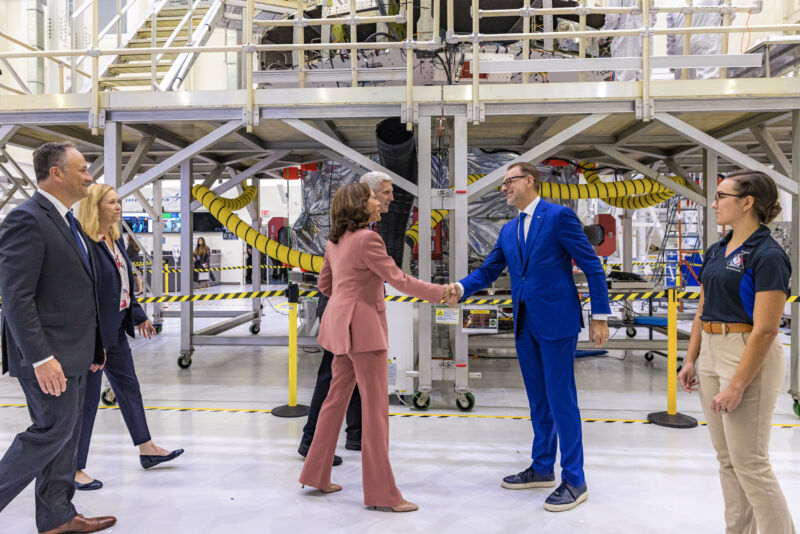Here’s why Europe is abandoning plans to fly aboard China’s space station

Enlarge / US Vice President Kamala Harris shakes hands with Josef Aschbacher, director general of the European Space Agency, right, during a tour of Artemis II and Artemis III mission hardware at Kennedy Space Center in Cape Canaveral, Florida, in 2022. (credit: Alex Perez/Sipa/Bloomberg via Getty Images)
Nearly six years ago the European Space Agency surprised its longtime spaceflight partners at NASA, as well as diplomatic officials at the White House, with an announcement that some of its astronauts were training alongside Chinese astronauts. The goal was to send European astronauts to China's Tiangong space station by 2022.
"We were welcomed as colleagues and friends by the taikonauts' and the instructors," said European astronaut Samantha Cristoforetti at the time. "Language and cultural differences are obviously a challenge, but also adds value, as we are all focused on the common goal of space exploration."
European astronauts did not fly to the Chinese space station in 2022, however, even though China completed its construction before the end of the year. In fact, Europeans are now unlikely ever to do so, even as the Tiangong facility flies for another decade, or longer, in low-Earth orbit.